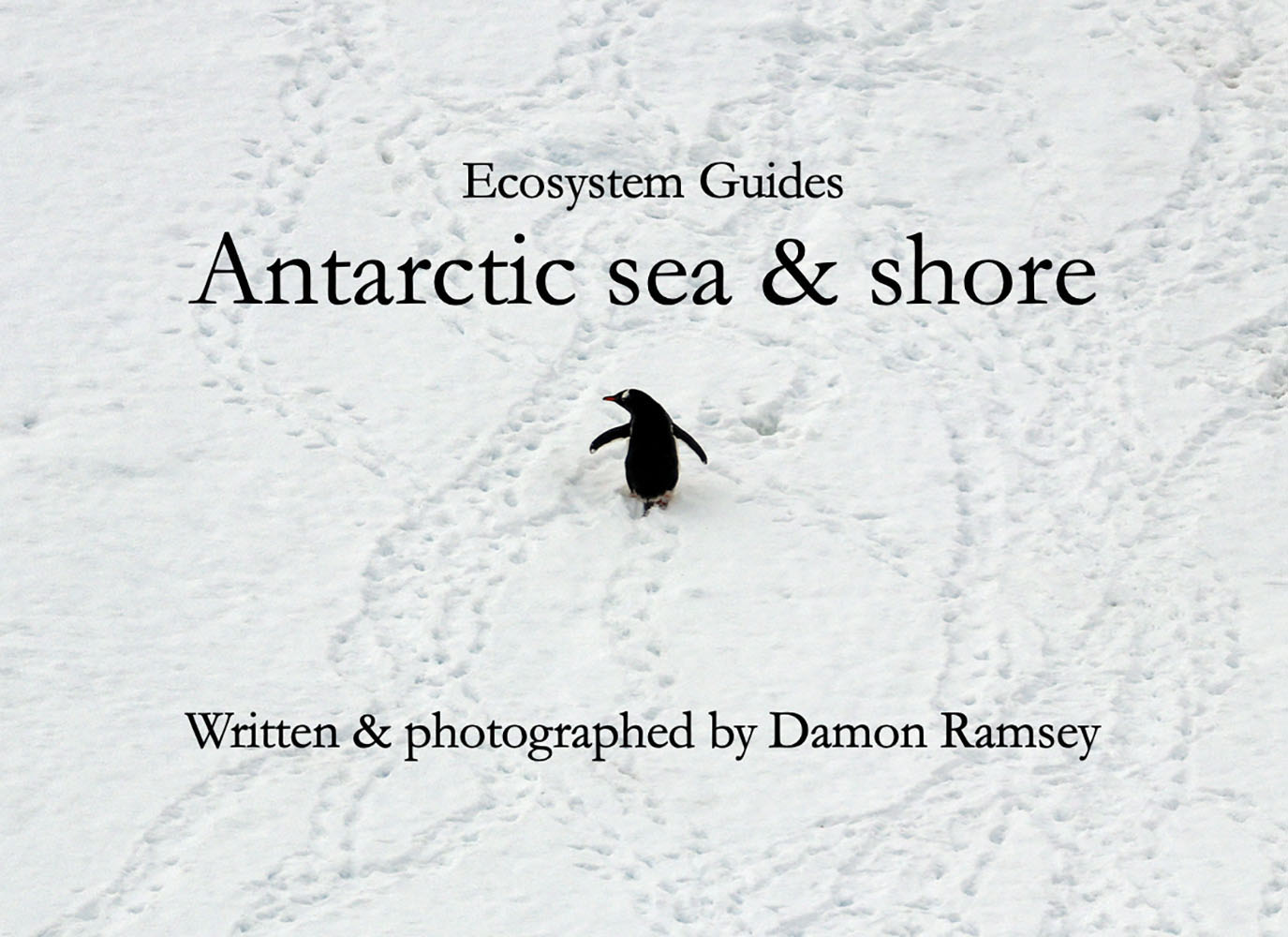ecosystem-guides.com
a guide to the planet's ecosystems
MADAGASCAN
Tropical & Subtropical Moist Broadleaf Forest (Rainforest)
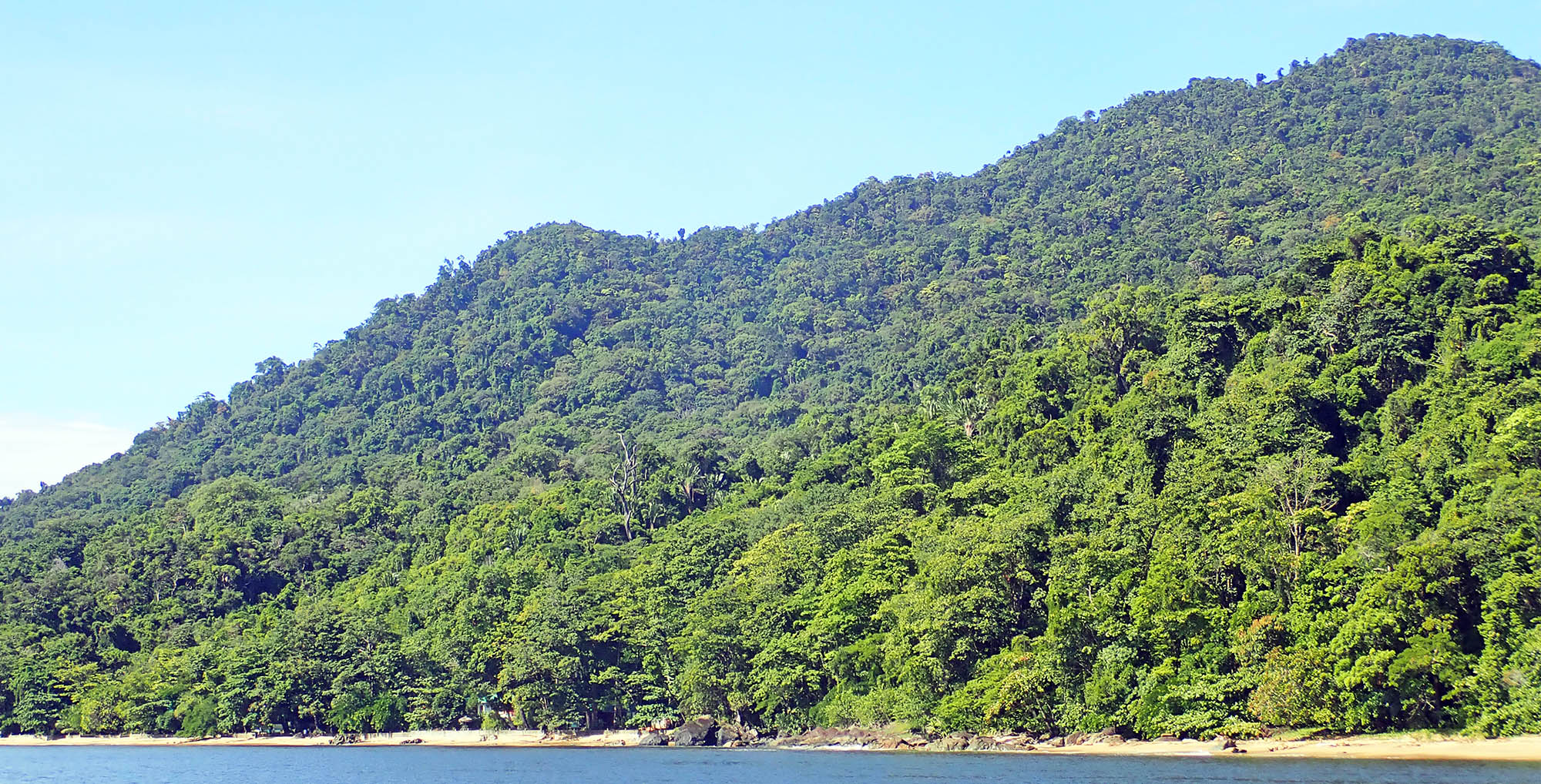 (Rainforest along coast at Masoala National Park, Madagascar)
(Rainforest along coast at Masoala National Park, Madagascar)A large percentage of plants found in Madagascar are endemic; they are found nowhere else on the planet. However, there are also some more widespread species. In the family Araceae are the Pothos spp. This is a genus of over 50 species. They usually grow as vines flat up against tree trunks in the rainforest. They often have a 'double' leaf shaped like a candle and flame. Species are found in Australia, New Guinea, through south-east Asia and on islands of the tropical Indo-Pacific. One example is Pothos scandens (below). It has a wide distribution through tropical Asia and Indo-Pacific islands, including Madagascar.
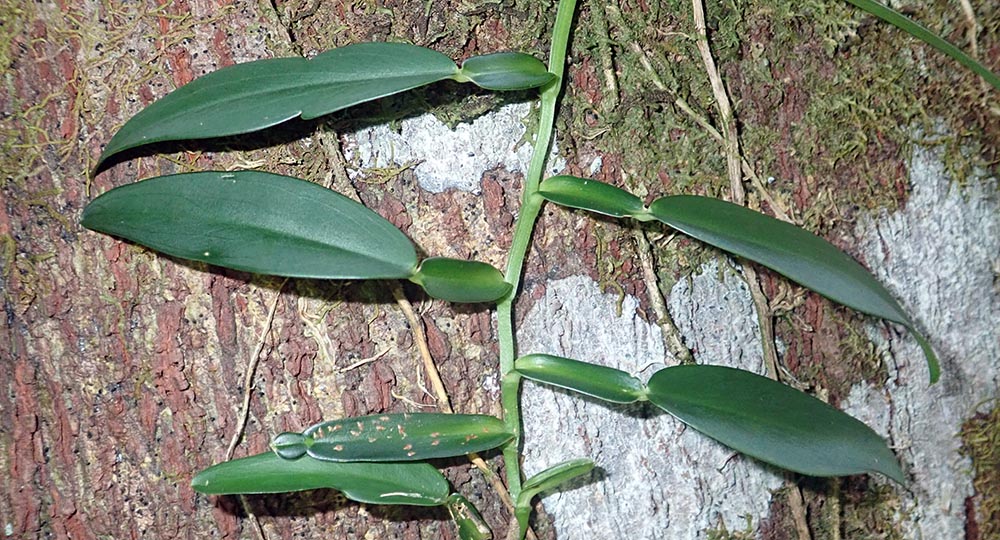 (Masoala, Madagascar)
(Masoala, Madagascar)There are about 20 species of Raffia Palm. One species is found in the Neotropics, with the rest native to Africa and Madagascar. They flower and fruit once in their lives, and then die. The fibre from the leaves is commonly used for a natural rope. Raphia farinifera (below) is native to Africa and naturalised in Madagascar.
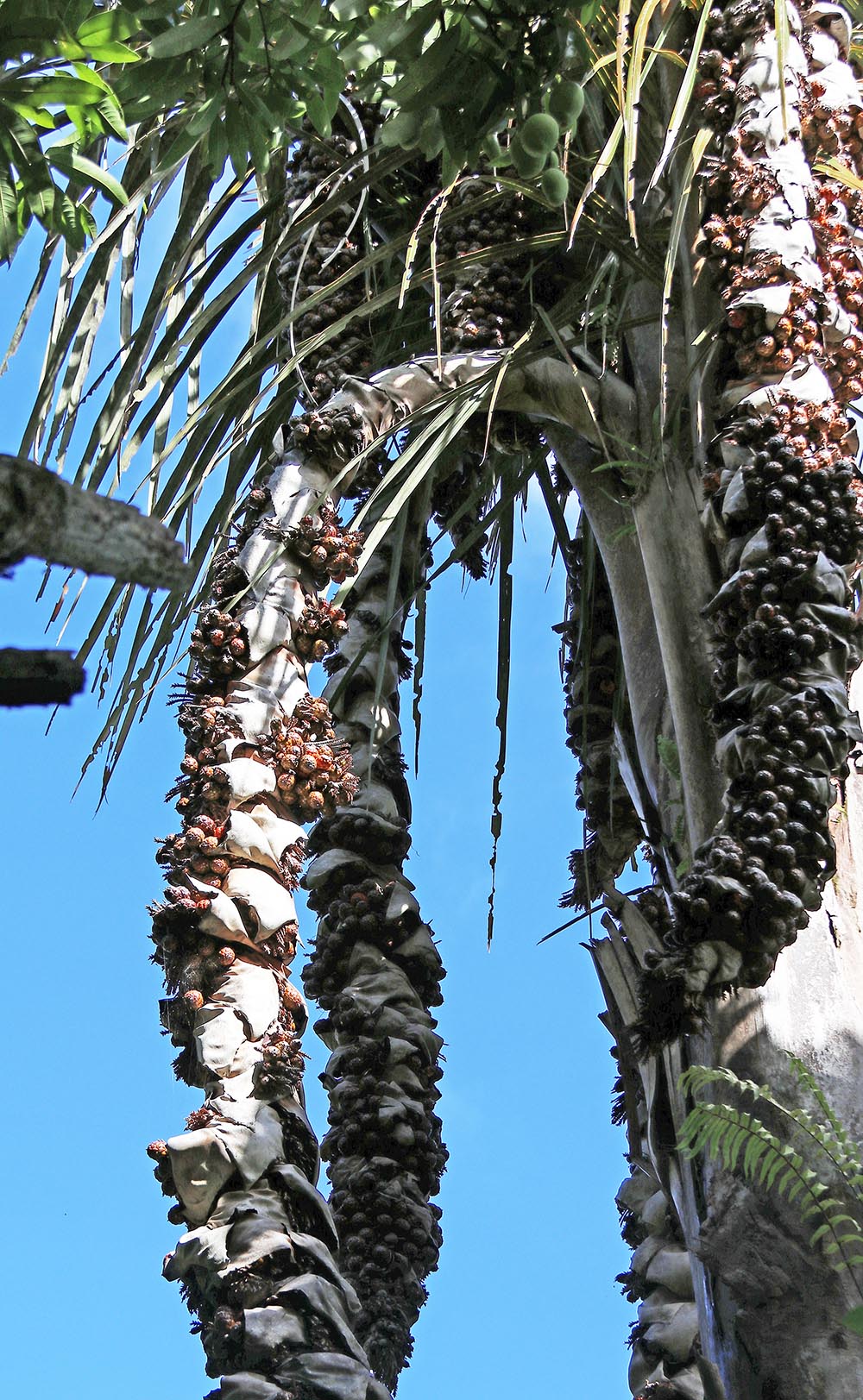 (Nosy Boraha/Sainte-Marie Madagascar)
(Nosy Boraha/Sainte-Marie Madagascar)The genus Ficus contains over 850 species of 'Fig' found throughout the tropics and warmer parts of the world, and are particularly diverse in tropical rainforests, including Madagascar. The species below is perhaps Ficus polyphlebia: this species has been observed 'fruiting' in massive lumps (as pictured below, in background).
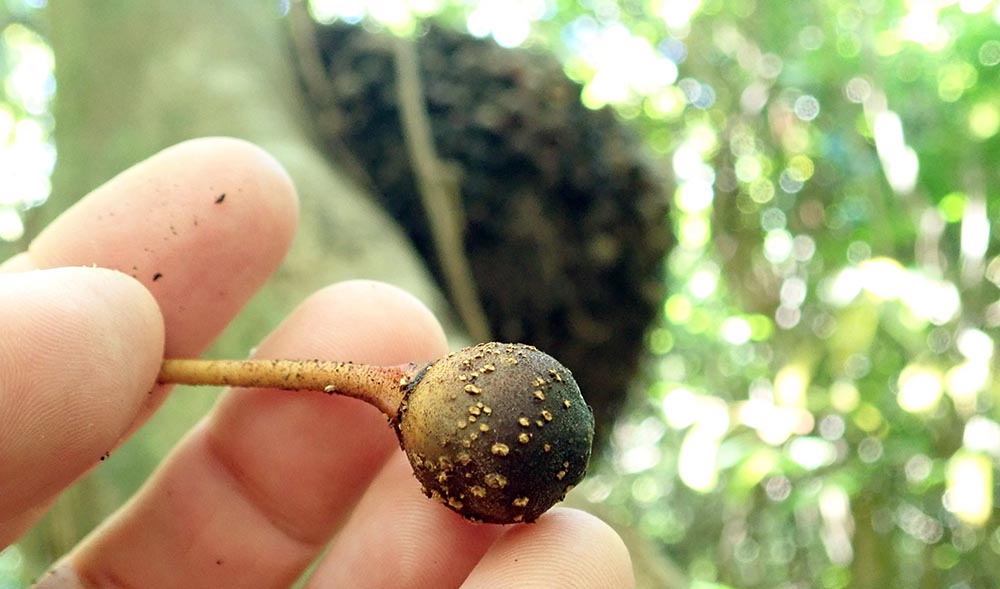 (Masoala, Madagascar)
(Masoala, Madagascar)Many of the smaller and lighter species of animals, such as insects and spiders, are more widespread on the south-west Indian Ocean islands and African mainland. An example is the ''Redleg OrbWeaver', Trichonephila inaurata, the most commonly seen large spider of Madagascar.
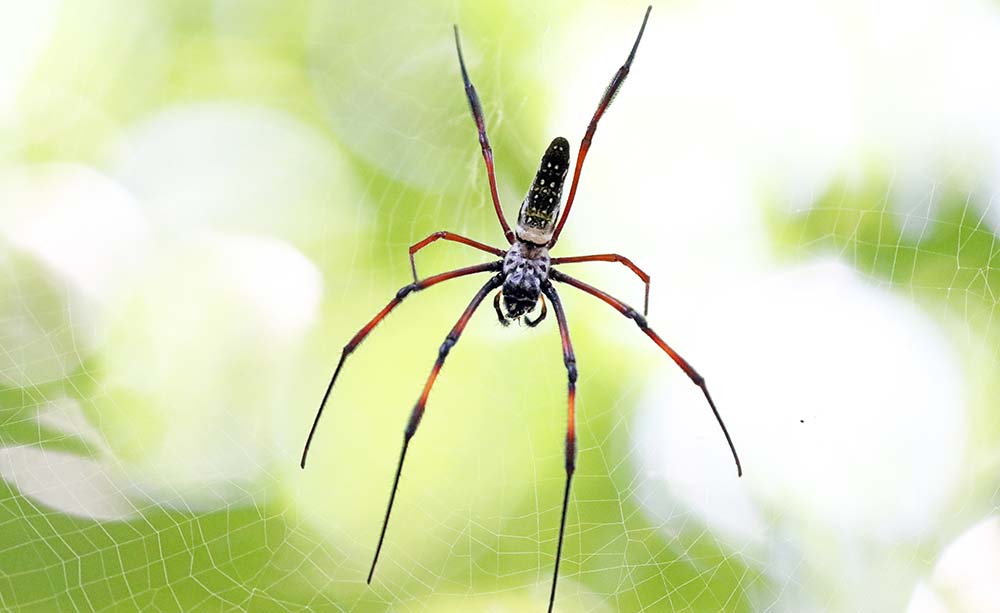 (Masoala)
(Masoala)But this is Madagascar, so as is the trend, there are many other invertebrate species that are endemic. A commonly seen large and spectacular moth found only on Madagascar and nearby Mayotte is the 'Suraka Silk Moth' Antherina suraka. This species is the only one of it's genus.

The rainforest of Madagascar has a fascinating diversity of endemic amphibians. The genus Aglyptodactylus includes six species of 'Madagascan Jumping Frogs', and are all endemic to Madagascar.
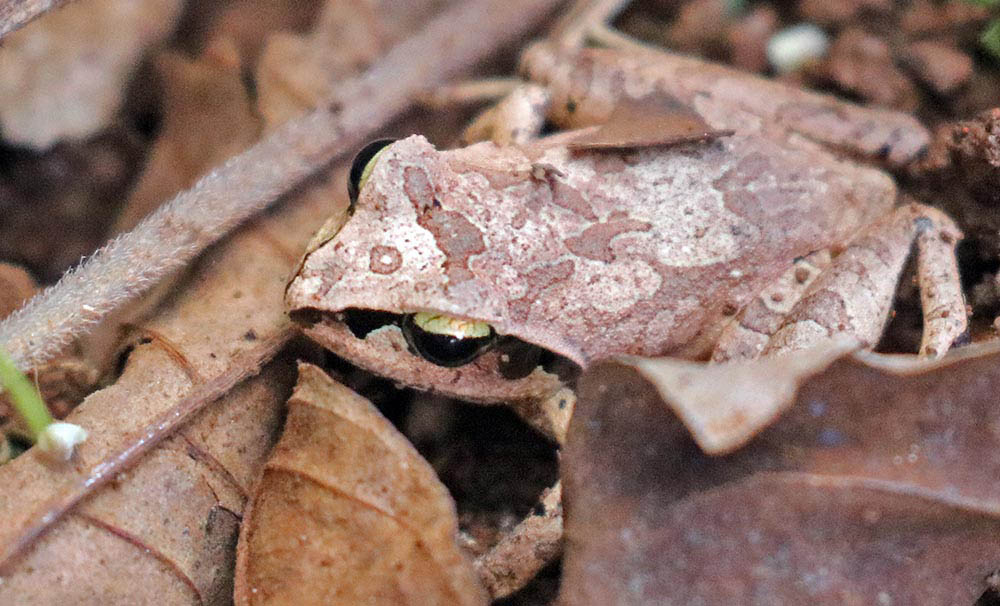 (Mount Amber National Park, Madagascar)
(Mount Amber National Park, Madagascar)The genus Boophis contains the 'Skeleton Frogs' or 'Bright-eyed Frogs'. There are at least 80 species in this genus, and it has been claimed that several new species are being discovered every single year. They are all endemic to Madagascar and surrounding islands. Many species have evolved parallel or convergent features with the Hylidae and Rhacophoridae 'Tree Frogs' in other parts of the tropics, including large eyes, long hindlimbs and toe pads.
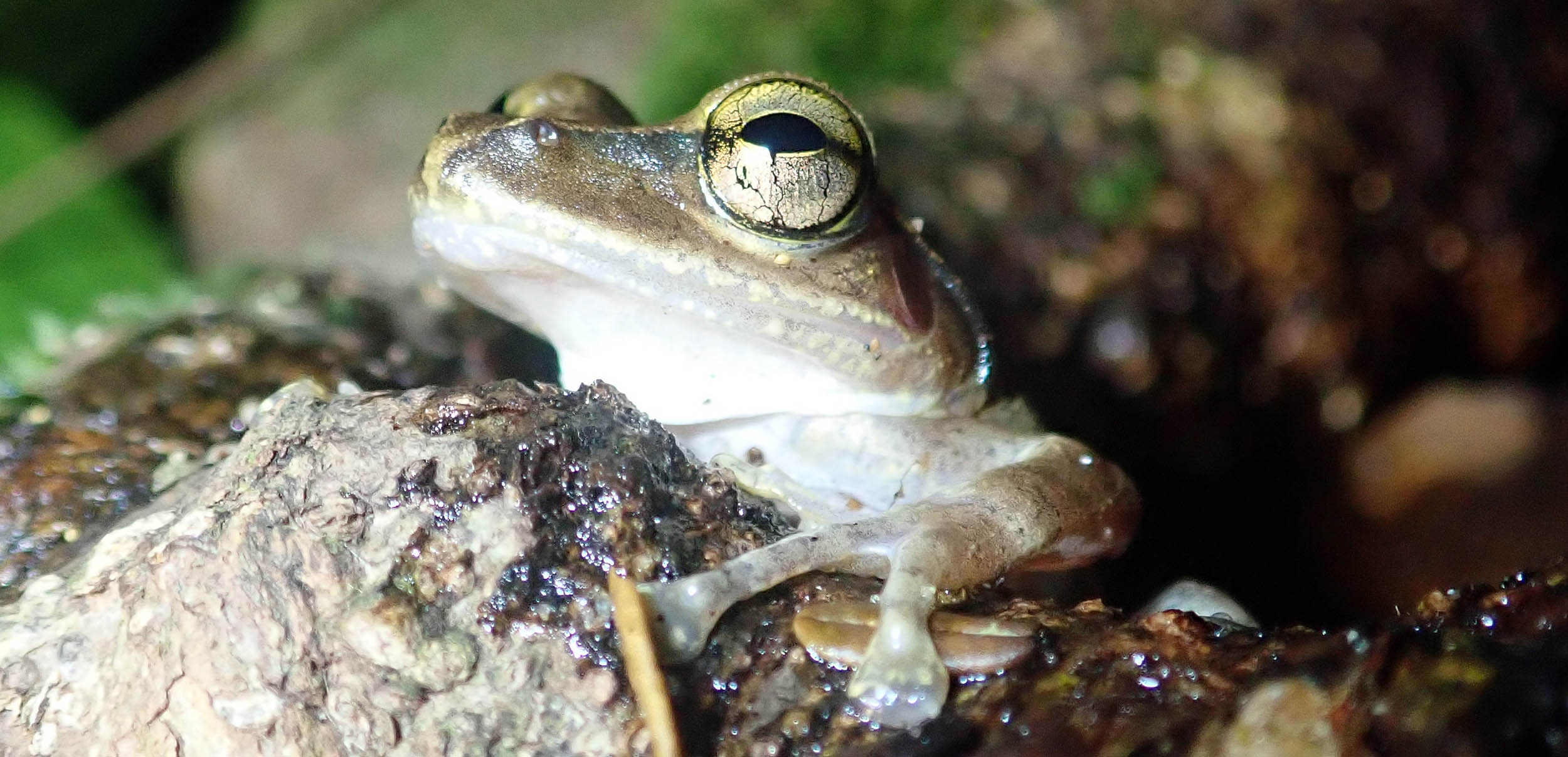 Boophis Frog (Masoala, Madagascar)
Boophis Frog (Masoala, Madagascar)Apart from the lemurs, Madagascar is probably best known for it's Chameleons. Even though chameleons are found across the tropics of Asia and Africa, their centre of diversity is in Madagascar. Furcifer pardalis, 'Panther Chameleon' is one of the most commonly seen species, but across its range this species varies in pattern and colour.
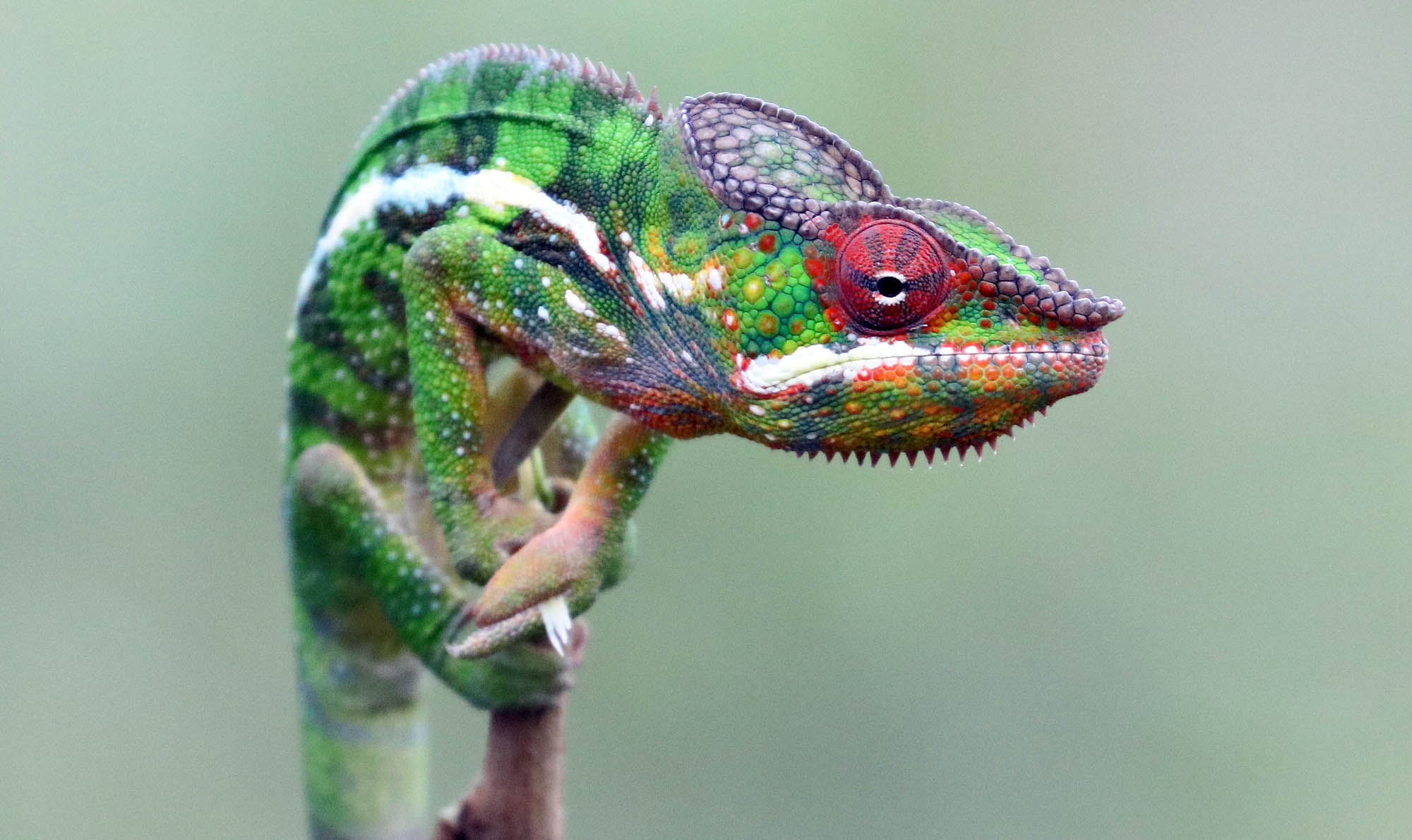 (outside Diego Suarez, Madagascar)
(outside Diego Suarez, Madagascar)There are not just large amd colourful chameleons, there are also tiny camouflaged ones. The genus Brookesia contains the 'Leaf Chameleons', tiny chameleons that live in the leaf litter of the rainforest.
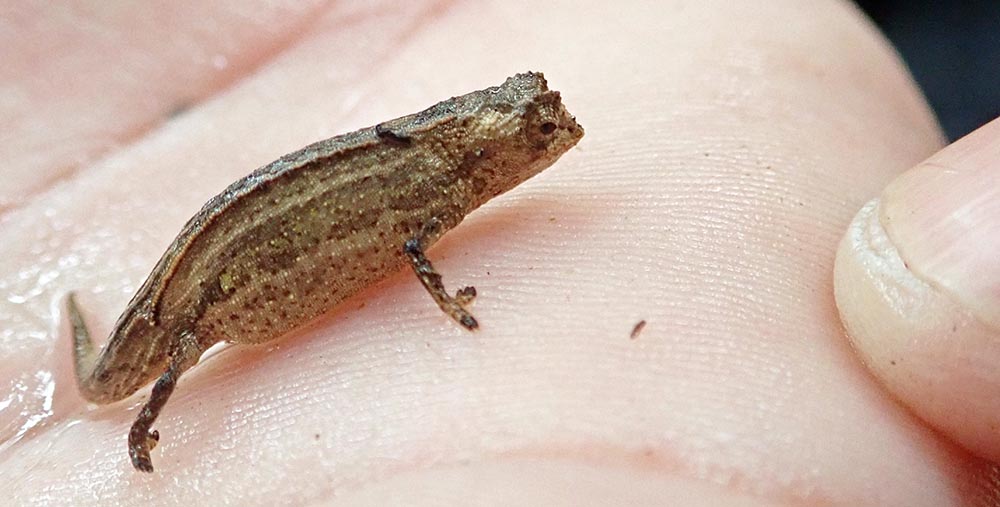
There are other endemic rich groups of reptiles here, such as the family Gekkonidae. The genus Uroplatus contains the 'Flat-tailed Geckos' or 'Madagascan Leaf-tailed Geckos'. They are all endemic to the forests of Madagascar. There are more species than previously thought; some can only be distinguished in the field by the colour and patterns in their large eyeballs.
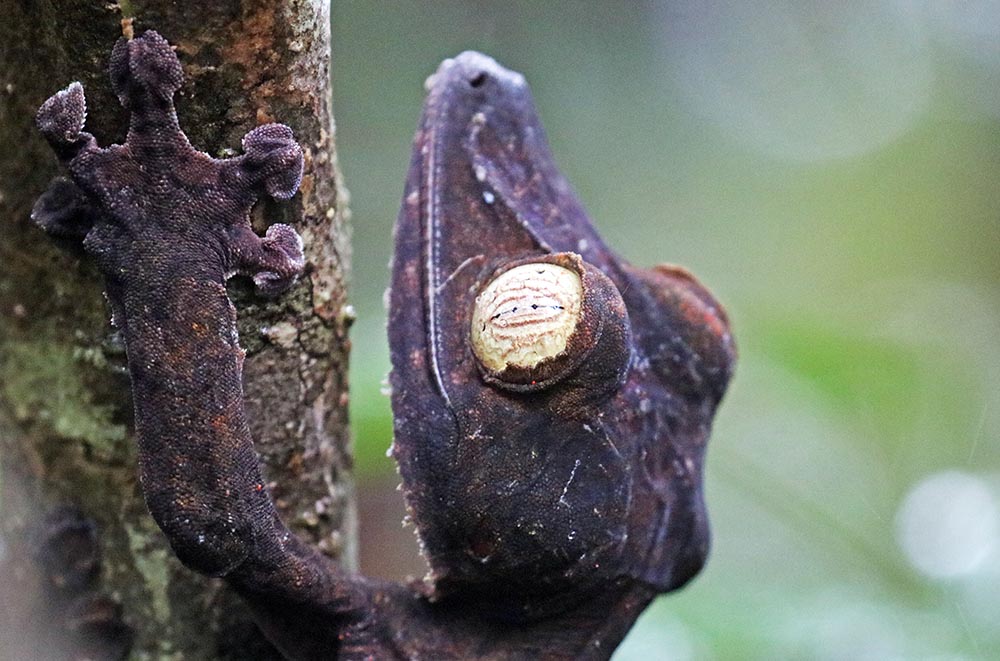
One of the areas where the endemism of Madagascar is very obvious is with the birds. There are some entire groups that are endemic to the island, such as the 'Ground Rollers'.
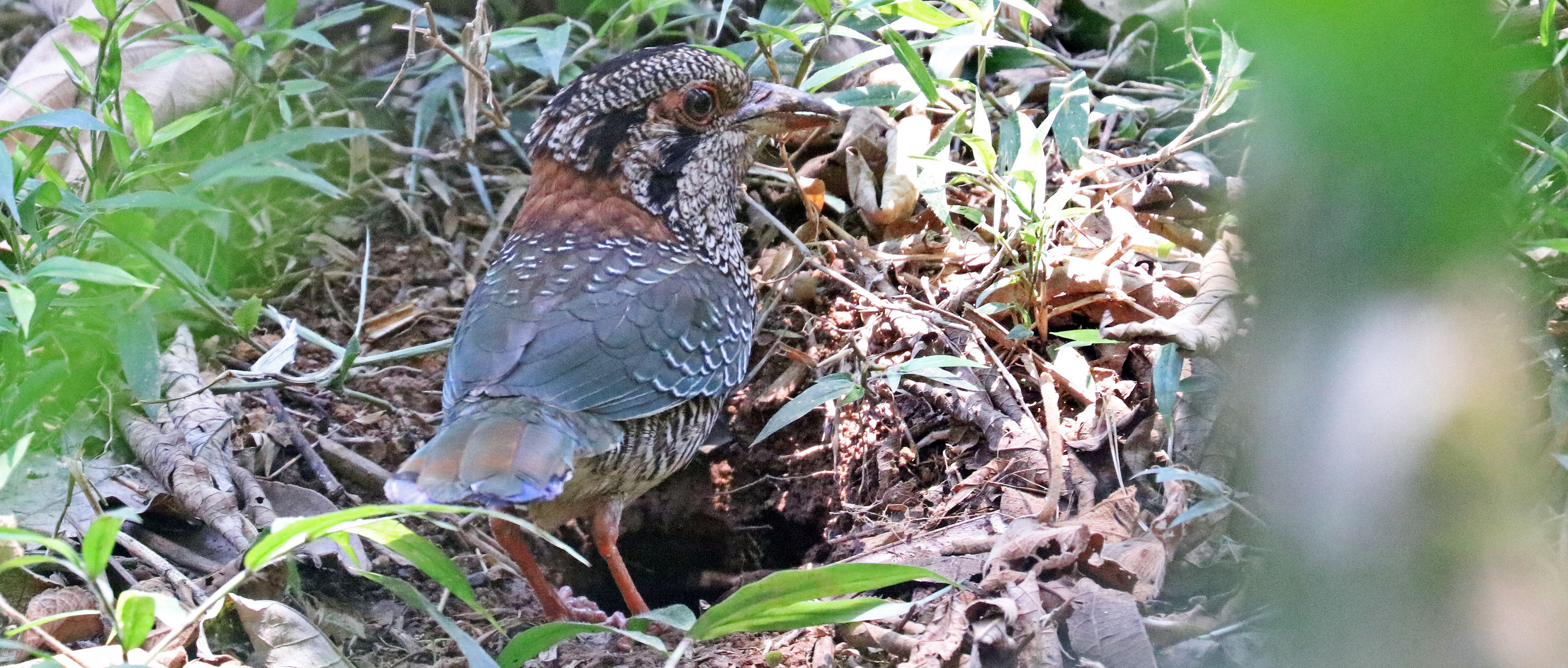 (Scaly Ground-Roller)
(Scaly Ground-Roller)Another group endemic to Madagascar are the 'Asities' of the family Philepittidae. The two genera and four species are all endemic to Madagascar. They are sexually dimorphic, with the males developing colourful heads masks around the eyes. The colour is unique in the animal kingdom, as the pigmentation is provided by collagen fibres. Although they are one of Madagascar's few fruit eating (and thus seed dispersing) birds, they also have forked tongues for nectar collection.
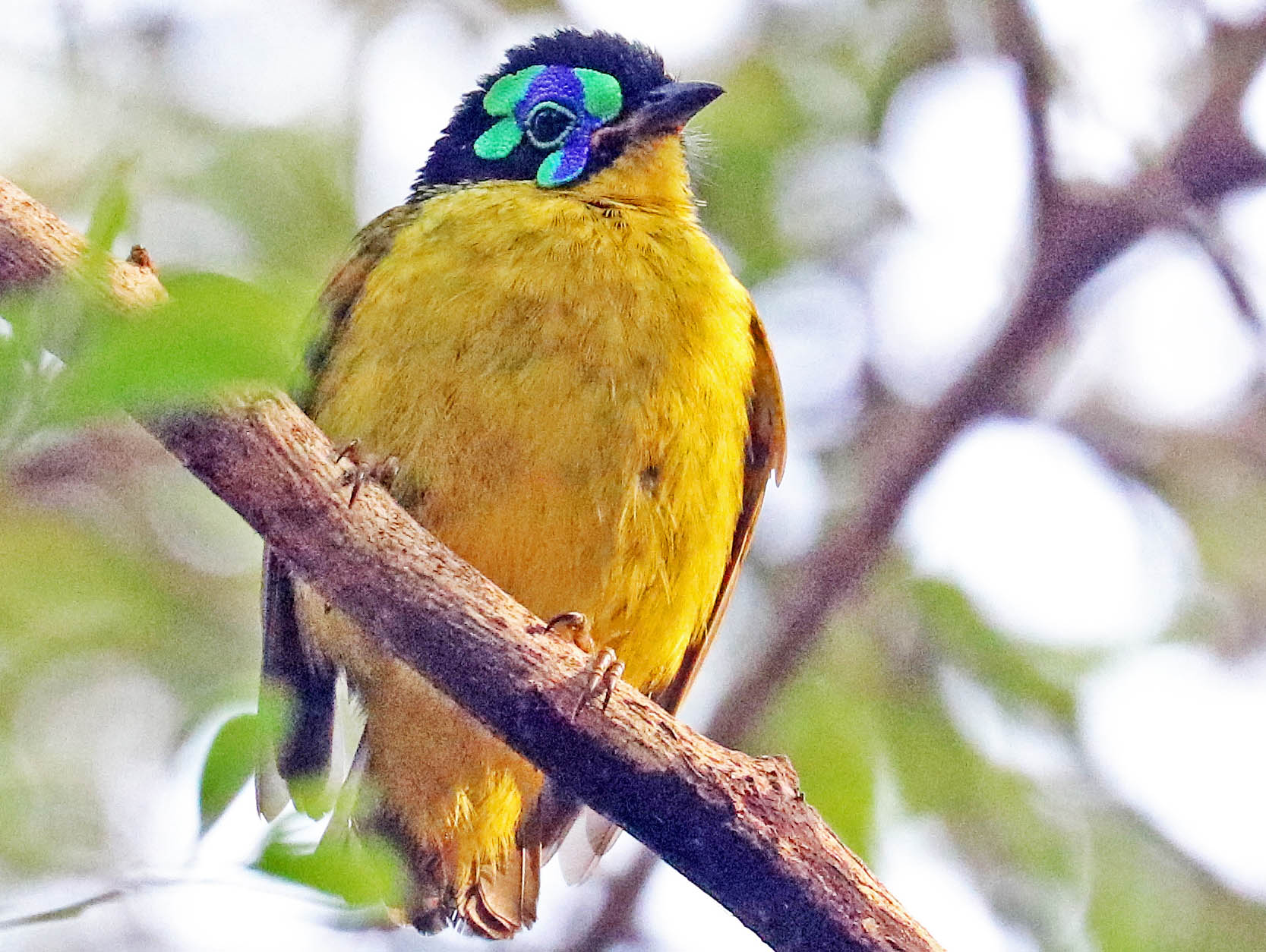
The biggest family of birds in Madagascar are the Vanga. Although species in the family are also found in other parts of the old world tropics of Africa and Asia, it is Madagascar where they have radiated to an extraordinary degree. Species of bird in Madagascar that were once thought to be other types of birds such as Babblers, Bulbuls and Warblers, have been found to be Vangab that have evolved to fill different niches. This family offers some of the most amazing and easy to recognise examples of convergent evolution on the planet.
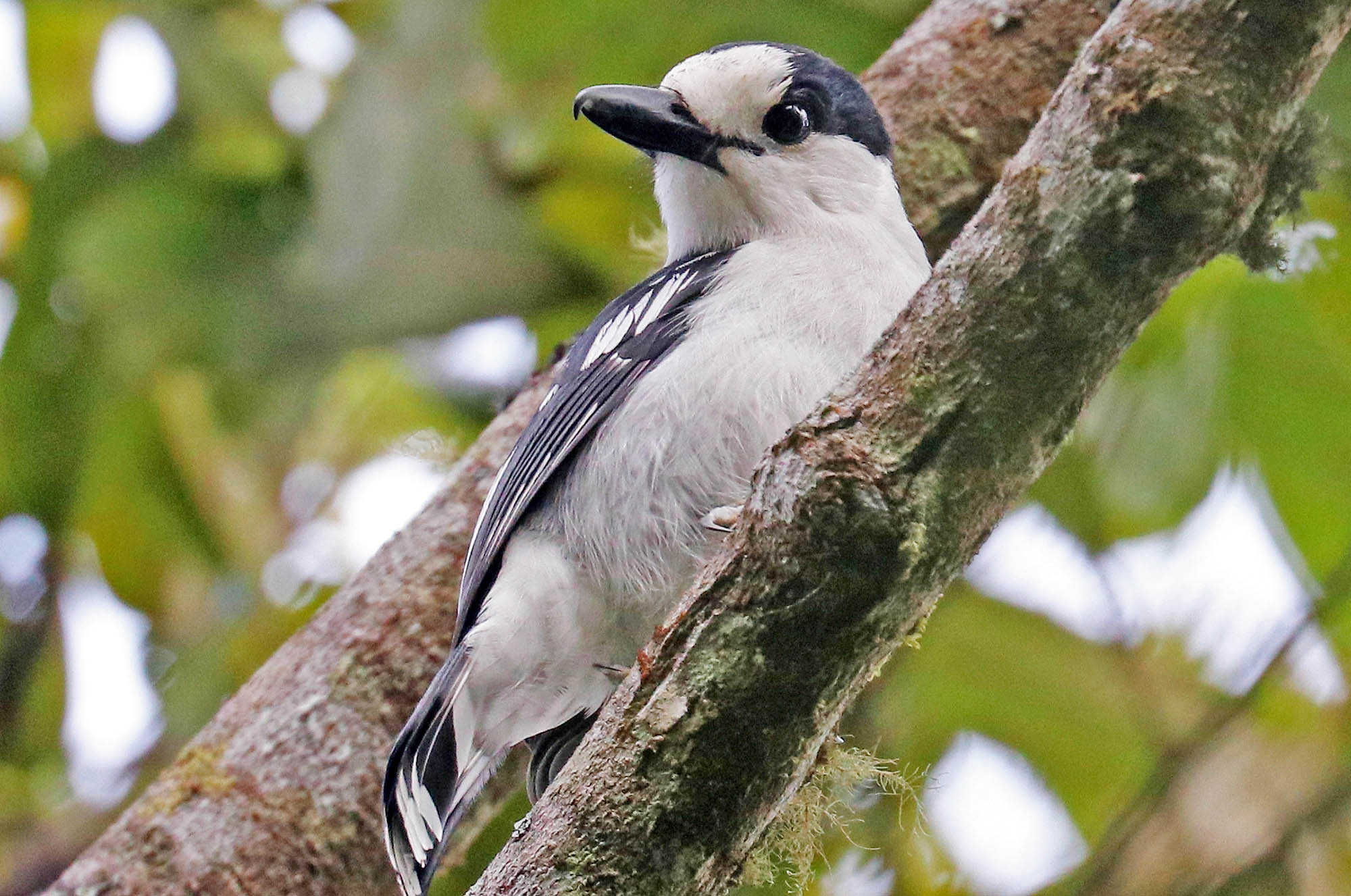 'Hook-billed Vanga', (Andasibe, Madagascar).
'Hook-billed Vanga', (Andasibe, Madagascar).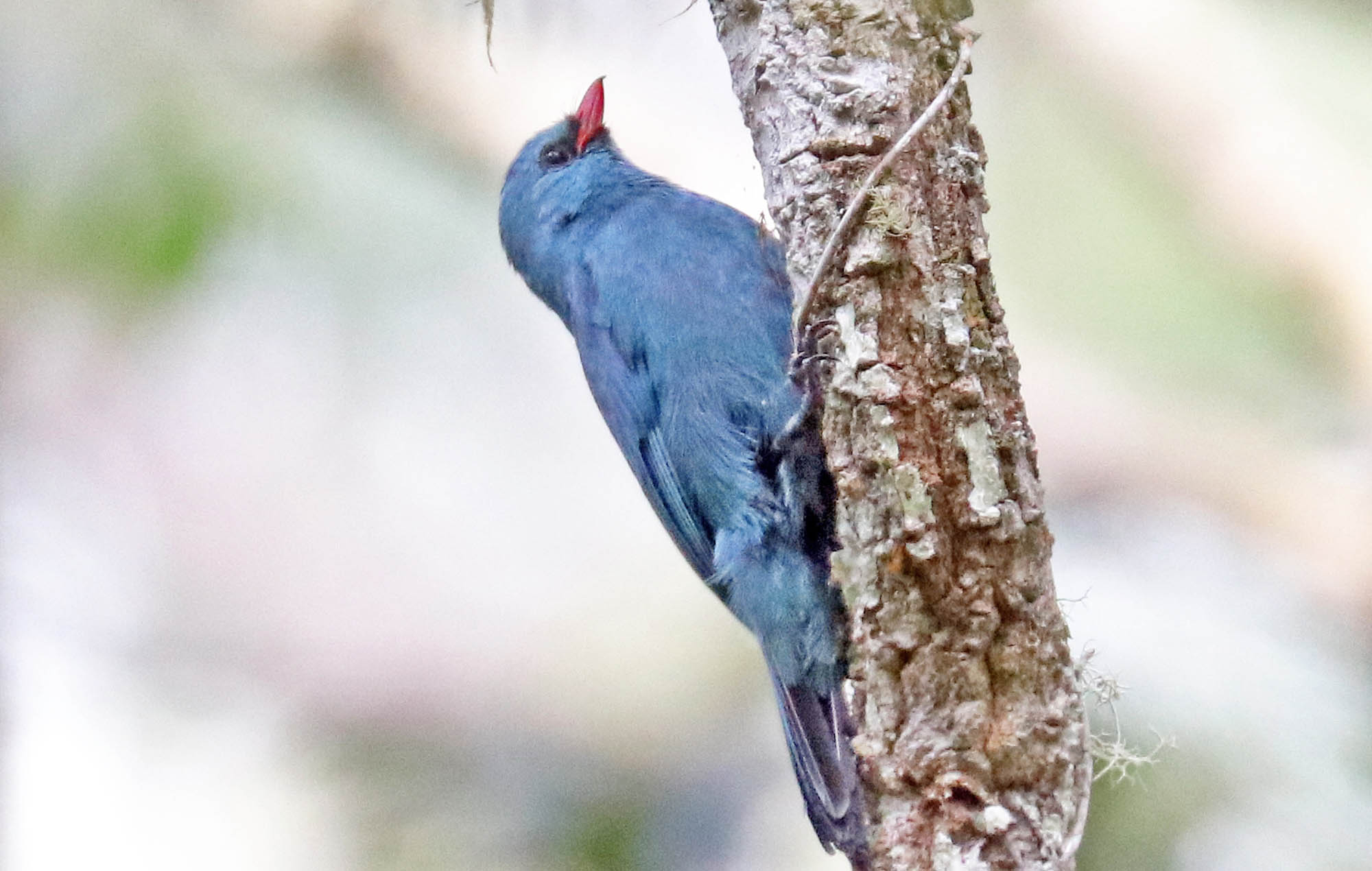 'Nuthatch Vanga', (Andasibe, Madagascar).
'Nuthatch Vanga', (Andasibe, Madagascar).Other birds groups have representatives that are presumably relatively recent arrivals, and are only slightly different from their mainland counterparts. An example is the 'Malagasy Bulbul' Hypsipetes madagascariensis. The species here was split from the Black Bulbul, of which is looks quite similar. The Malagasy Bulbul is found in various wet and dry habitats across Madagascar, and with subspecies on surrounding island groups.
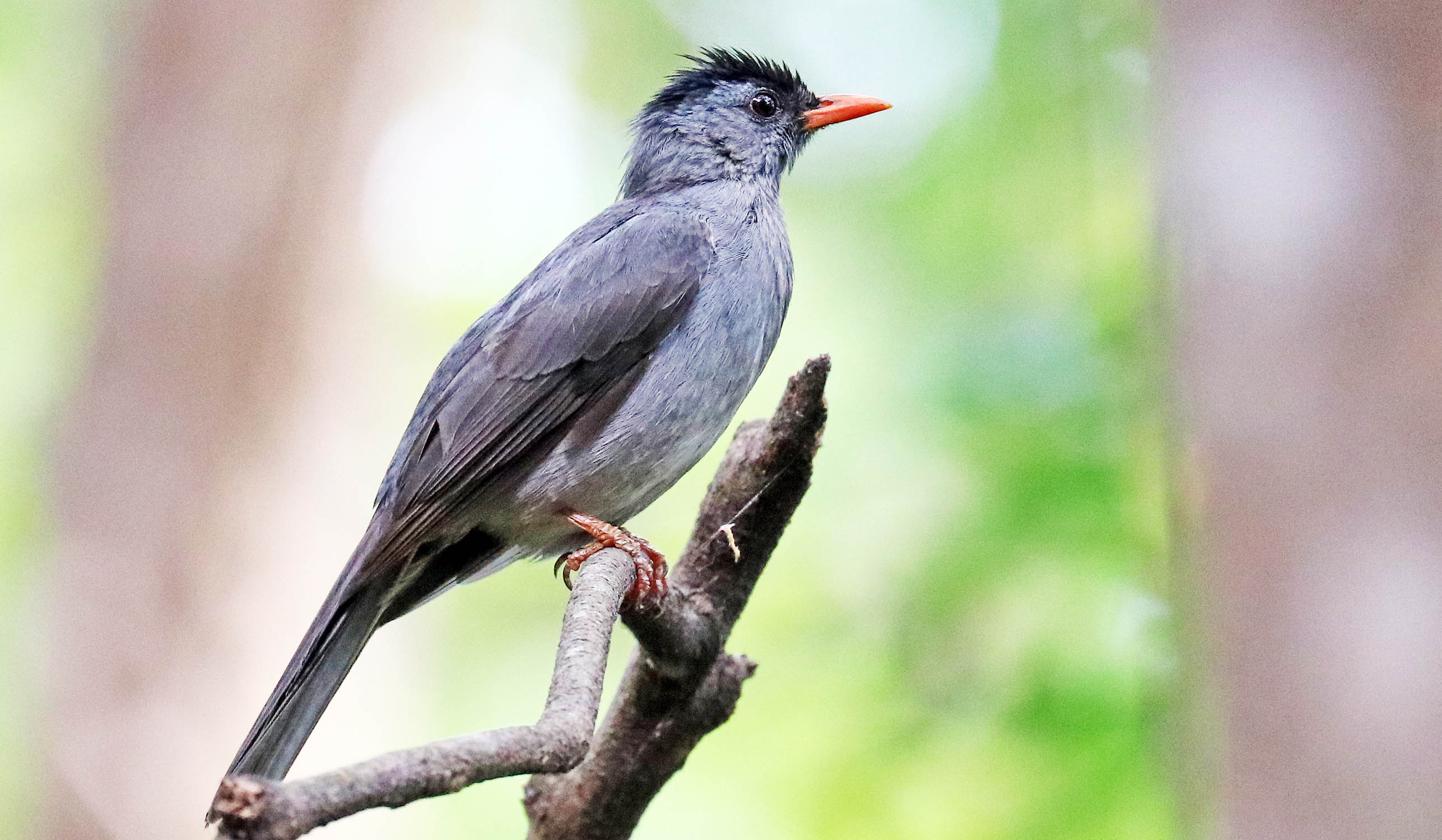
Places to experience the Madagascan rainforest
Madagascar has a number of national parks where you can explore the countries rainforest, including Amber Mountain National Park and Masoala.
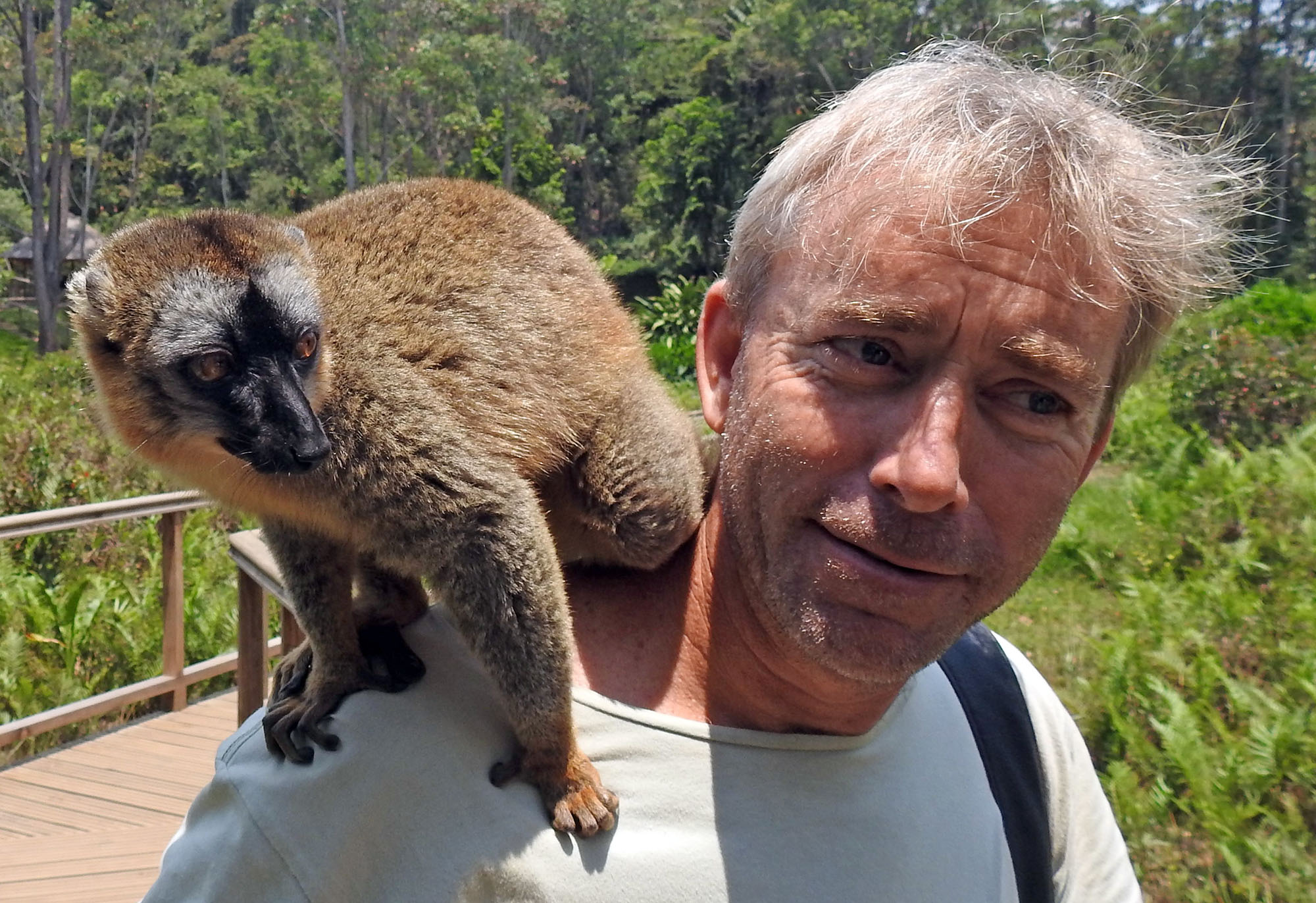 the author Damon Ramsey with a lemur on his shoulder (photograph by Malcolm Turner)
the author Damon Ramsey with a lemur on his shoulder (photograph by Malcolm Turner)For an edited version of one of my introductory lectures that I give on expedition ships about the people of Madagascar.
